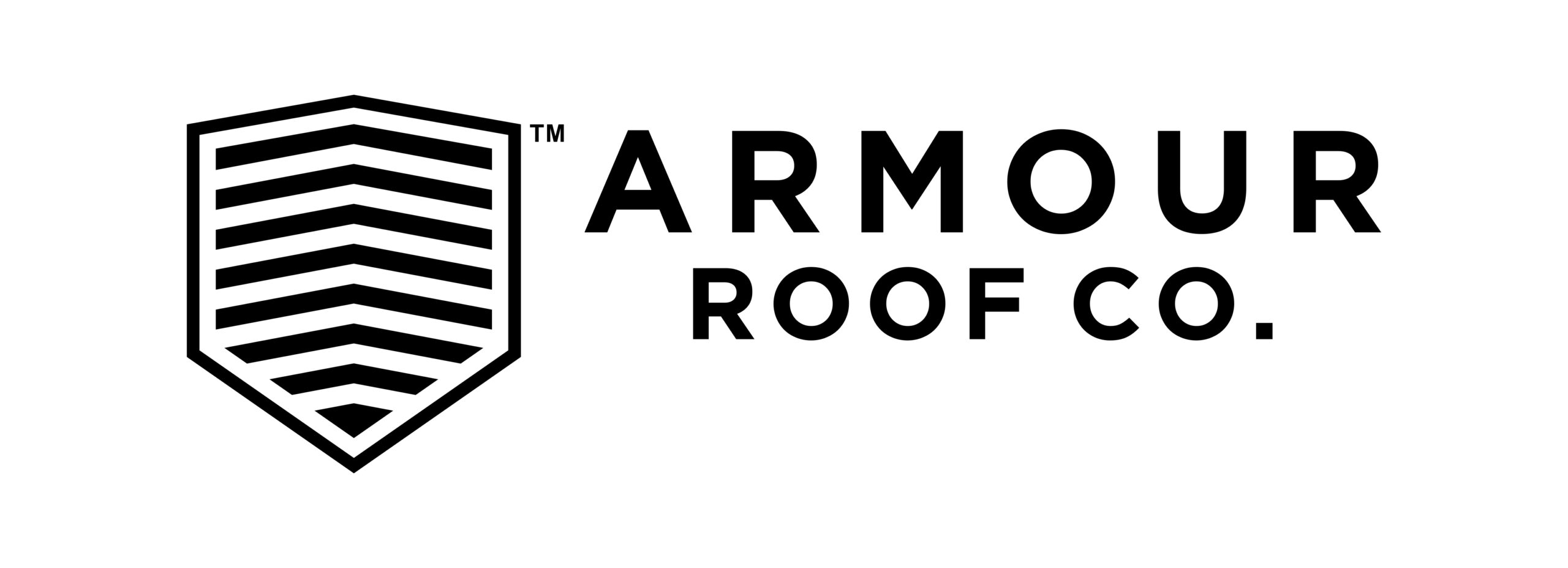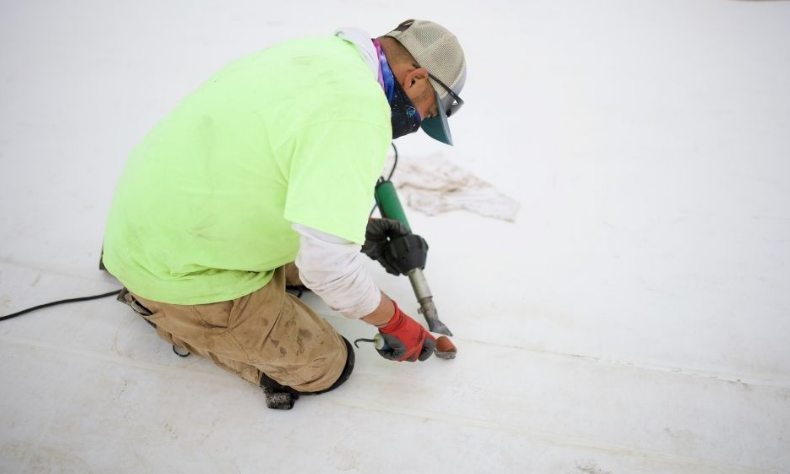Maintaining the integrity of your commercial roof is crucial for protecting your investment. Over time, factors like weather, UV rays, and general wear and tear can compromise your roof’s performance. This is where commercial roof restoration comes into play. The restoration process involves cleaning, repairing, and applying a protective coating system to address minor issues and prevent further roof damage.
The primary goal is to extend your roof’s lifespan while improving its energy efficiency and overall durability. Common types of roof coatings used in restoration include acrylic, silicone, and polyurethane, each tailored to specific needs such as weather resistance or UV protection. For instance, silicone coatings are renowned for their ability to withstand ponding water, making them ideal for flat roofs in areas prone to heavy rain.
According to the U.S. Environmental Protection Agency (EPA), reflective roof coatings can reduce the maximum indoor temperatures by 2.2 to 5.9°F, lowering cooling costs by 11-27%. This makes roof restoration a solution for protecting your building and an effective way to achieve energy savings and enhance comfort in commercial buildings.
In this article, we’ll review and learn about commercial roof restoration, how it compares to other options like roof repairs and replacement, its benefits, and how to choose the right contractor.
Comparing Restoration to Other Options
When dealing with a damaged roof, you’ll often have three main choices: roof repairs, replacement, or restoration. Each option has advantages, and the right choice depends on your roof’s current condition and long-term goals.
Understanding the differences can help you select the best solution for your commercial property.
Roof Repair
Roof repairs are typically used to address minor issues such as small punctures, deteriorating caulking, or isolated leaks. This approach is ideal when the existing roof is still structurally sound, and the damage is localized.
Repairs work best for newer roofing systems or those that have been well-maintained. For example, repairing a metal roof with a few damaged tiles or missing shingles can prevent further damage and extend the roof’s lifespan.
ScienceDirect research shows that proper and proactive maintenance of the roof system can prolong the roof’s life.
Roof Replacement
Complete roof replacement is necessary when the existing roof system has reached the end of its service life or sustained severe damage. This process involves removing the entire roof and replacing it with a brand-new roof.
Roof replacement occurs when structural issues, such as a failing roof or a deteriorating roof, render the current system unrepairable. For instance, an average commercial roof with a prolonged period of wear or extensive water damage is often beyond the scope of restoration.
Restoration
Commercial roof restoration offers a cost-effective alternative to full replacement. By addressing existing issues and applying a protective roof solution, restoration extends the current roof’s lifespan.
Restoration is ideal for commercial facilities with roofing systems that are still structurally sound but show signs of aging, such as minor leaks or weathered roof surfaces. Modified bitumen or built-up roofs, for example, often benefit from restoration to avoid landfill waste and reduce environmental impact.
The cost of water damage restoration in residential buildings typically ranges from $1,300 to $5,600. However, due to larger roof areas and the complexity of roof damage, these costs are often higher for commercial properties.
Pricing can vary from $3–$4 per square foot for clean water (category 1) damage to $7–$7.50 per square foot for black water (category 3) damage. Restoration costs can skyrocket in extensive flooding, storms or hurricanes, ranging from $20,000 to $100,000. This demonstrates the financial advantage of addressing potential issues early through a strategic roof restoration project.
|
Water Damage Class |
Price Range (per sq.ft.) |
|
Class 1 (Clean water) |
$1 – $3 |
|
Class 2 (Gray water) |
$4 – $7 |
|
Class 3 (Black water) |
$7 – $7.5 |
|
Class 4 (Hurricane or flood damage) |
$20,000 – $100,000 (Overall cost) |
|
Labor Costs |
$70 to $200 (per hour) |
When to Consider Roof Restoration
Knowing when to invest in commercial roof restoration is crucial for maintaining your roof’s lifespan and avoiding costly roof replacement. While every roofing system has unique needs, there are several clear signs that your existing roof may benefit from a restoration process.
1. Minor Leaks and Water Damage
Persistent minor leaks or visible water stains on ceilings are common indicators that your roof surface needs attention. Addressing these issues early with a roof restoration project can prevent further damage and costly repairs.
2. Signs of Aging
Over time, the roofing materials on your commercial property may degrade due to exposure to the elements, such as UV rays and heavy rain. If your roof appears weathered or exhibits wear and tear, a restoration can refresh and protect your existing roof system.
3. Energy Inefficiency
Rising energy costs may point to poor insulation or reflectivity in your roof structure. Restoring your roofing system with modern commercial roof coatings like acrylic or silicone can improve energy efficiency and reduce cooling expenses.
4. Deteriorating or Weathered Surfaces
Cracks, blisters, and general deterioration of the roof surface are clear indicators that your roof is at risk. Restoration enhances durability and provides a protective layer against future roof damage.
Benefits of Commercial Roof Restoration
Many building owners evaluate the options for addressing a damaged roof and find that commercial roof restoration delivers significant advantages. Beyond addressing current issues, restoration offers long-term benefits that make it a compelling choice over complete roof replacement.
Save Big, Restore Smart
Restoration is a fraction of the cost of full roof replacement while achieving similar outcomes in extending a roof’s service life. By addressing issues early, restoration reduces the need for expensive structural repairs or entire roof replacement.
Shield Against Future Storms
Restoration strengthens your roof structure by addressing vulnerabilities like cracks or leaks and adding a durable protective layer. Modern roof coatings, such as silicone and acrylic, provide resistance against UV rays, heavy rain, and temperature fluctuations, ensuring your roofing system remains robust.
Eco-Friendly and Energy-Smart Solutions
Restoration is an environmentally conscious choice. Unlike replacement, which generates landfill waste by removing the existing roof system, restoration reuses the current roof’s lifespan and minimizes material disposal. Additionally, reflective roof coatings improve energy efficiency, reducing cooling costs and lowering the building’s carbon footprint.
Studies reveal that reflective coatings can lower a building’s cooling energy by 40–50%, translating to substantial energy cost savings over time. Restoring your commercial roof extends its lifespan and reduces your commercial property’s environmental impact.
The Restoration Process
A successful roof restoration project involves multiple steps, each designed to assess, repair, and protect your roofing system while extending its lifespan. Here’s a detailed step-by-step overview of the restoration process that transforms a deteriorating roof into a durable and energy-efficient structure.
Step 1: Thorough Inspection
Every restoration begins with a thorough inspection by an experienced professional to evaluate the roof’s current condition. This step identifies potential roof damage, such as cracks, leaks, or structural issues, and determines whether the roof is a suitable candidate for restoration. Roof inspectors also check for signs of aging, such as worn roof coatings or areas with poor insulation.
Step 2: Cleaning and Preparation
Next, the roof is cleaned to remove debris, dirt, and algae, which can interfere with the adhesion of roof coatings. Pressure washing is often used to clean the roof surface, ensuring a smooth base for the next steps. This stage is crucial to ensure the coating system adheres properly and provides maximum durability.
Step 3: Repairs
During this phase, minor issues like punctures, cracks, or loose fasteners are addressed. Roof repairs focus on restoring the structural integrity of the roofing materials, ensuring that the existing roof system can support the new restoration project. Any damaged or missing shingles are replaced, and problem areas are sealed to prevent future leaks.
Step 4: Coating Application
The final step involves applying a high-quality roof solution, such as acrylic, silicone, or polyurethane coatings. These roof coatings provide a protective layer that enhances weather resistance, improves energy efficiency, and extends the roof’s lifespan. Coatings are chosen based on the roof’s material and environmental conditions, such as exposure to UV rays or heavy rain.
Finding a Qualified Contractor
Choosing the right contractor is critical to the success of your roof restoration project. Experienced professionals ensure the job is completed to the highest standard and help you avoid costly mistakes. Here’s why expertise matters and what to look for when selecting a contractor for your commercial roof restoration.
Roof restoration is a specialized process that requires knowledge of various roofing systems, materials, and techniques. An inexperienced contractor can cost you big time by overlooking key issues in the roof’s current condition or improperly applying unsuitable roof coatings, leading to subpar results. On the other hand, experienced professionals will conduct a thorough inspection, recommend the best solution for your existing roof, and ensure long-lasting results.
When you’re selecting a contractor for your commercial property, these are the key factors you should keep in mind:
1. Credentials and Certifications
Verify that the contractor is licensed, insured, and certified to work on commercial roofs. Look for certifications from reputable organizations.
2. Experience with Similar Projects
Choosing a contractor who specializes in commercial buildings and has experience with the restoration process. This ensures they understand the nuances of roof coatings, roofing materials, and working on flat roofs or other specific systems.
3. References and Reviews
Check online reviews and ask for references from previous clients. A trusted contractor with a good reputation will have a track record of successful roof restoration projects and satisfied customers.
4. Transparent Pricing
A reliable contractor will provide a detailed, itemized estimate that includes costs for inspection, roof repairs, and coating application. Ensure they clarify all charges upfront to avoid unexpected hidden costs that could inflate your budget.
5. Warranty and Aftercare
Ensure the contractor offers a warranty on their work and provides ongoing support for roof maintenance. This is a sign of confidence in their high-quality materials and workmanship.
Choosing Armour Roof Co. for Your Commercial Roofing Needs
Investing in commercial roof restoration is a smart choice to protect your roofing system, extend its lifespan, and improve energy efficiency. By choosing the right contractor, you ensure that your roof restoration project delivers the maximum return on investment.
Armour Roof Co. has years of expertise and experience in working with residential and commercial roofs. We offer tailored solutions that suit the unique needs of your commercial property. From thorough inspections to applying high-quality materials, we ensure that your roof solution is durable, reliable, and cost-effective.
Schedule an inspection today to restore and protect your roof. Our team of professionals will guide you through every step of the way.




